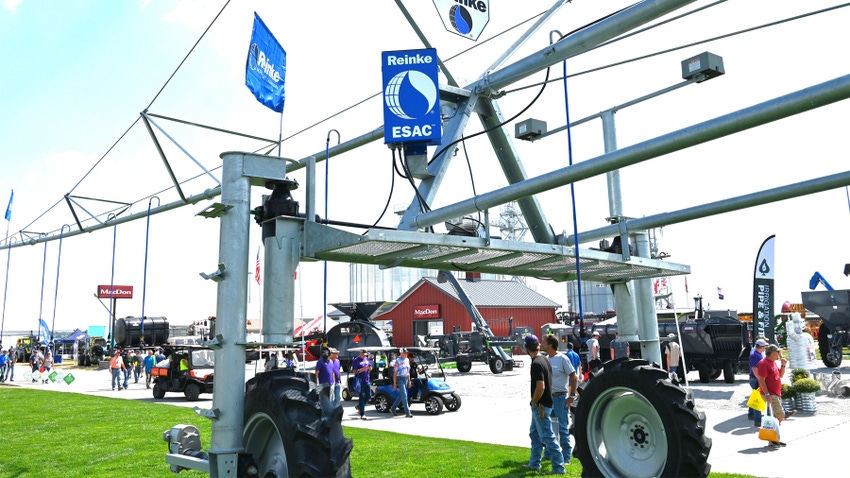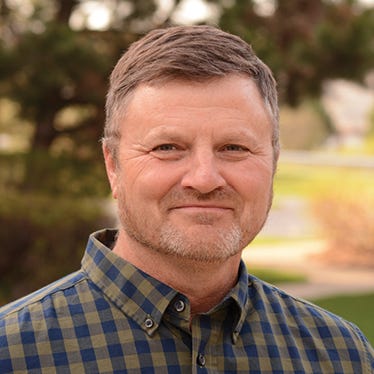
Improved coverage and uniformity are two key components for irrigators. That’s why Reinke’s Electronic Swing Arm Corner system, released in 2020, is such a useful tool in the field for center-pivot operators.
While swing arms have been around for a while, when Reinke — based in Deshler, Neb. — introduced ESAC, it was the company’s way of offering sprinkler water application control to pivot corners, virtually eliminating under- or overwatering on those challenging parts of a center-pivot-irrigated field.
More efficient watering
With the Reinke ESAC system, operators can get another roughly 26 acres under the sprinkler in a normal 160-acre, square-shaped field. And on those additional acres, Reinke promises uniformity through ESAC, applying precise amounts of water based on GPS positioning.
Since the rollout three years ago, producers have learned to better adapt the system to “use the water application more efficiently with GPS location, making the water applications up to 45% more efficient,” David Hoferer, west-central territory manager for Reinke, explained to Farm Progress at Husker Harvest Days. “Since the ESAC was released in 2020, there are well over 100 ESACs now in Nebraska,” and many more around country.

PRECISION WATERING: Reinke’s ESAC system provides precision amounts of water based on GPS positioning, making watering up to 45% more efficient.
ESAC’s electronic zone control uses sequential sprinkler zones based on GPS to provide the correct amount of water. The ESAC system is independently controlled by the S-Box. That way it can be added, no matter which main control panel is being used on the main pivot system.
There are three ESAC control packages available to irrigators. The ESAC 6.0 includes up to six sprinkler zones, and it comes standard on all four SAC models at Reinke. These systems require Reinke Navigator End of System GPS control and one valve box, while an air compressor is optional.
The ESAC 12.0 and 12.5 packages come with additional sprinklers and allow up to 12 sprinkler zones. The required hardware for these includes the Navigator End of System GPS, just like the 6.0, along with two valve boxes and a required air compressor.
No under- or overwatering
“In years past, when we were turning sprinklers on from the wheel angle of the corner arm, we had a significant issue with the corner arm not putting enough water on when extending out into the corner, and putting too much water on when coming back in to be perpendicular with the base machine,” Hoferer notes. “We don’t have that issue any more, and it has been well noticed by our farmer-customers.”
Variable-rate irrigation is also an option with ESAC. “SAC VRI is an option that allows any section to be customized to apply a lesser application at anytime and anywhere within the path to meet the needs of the soil type and/or the crop,” Hoferer adds.
Learn more at reinke.com.
Read more about:
IrrigationAbout the Author(s)
You May Also Like






